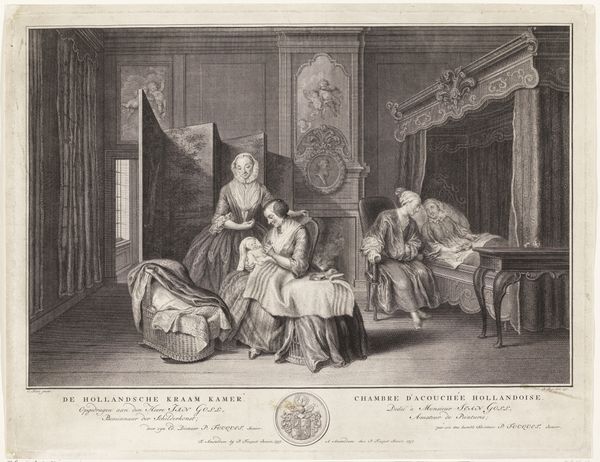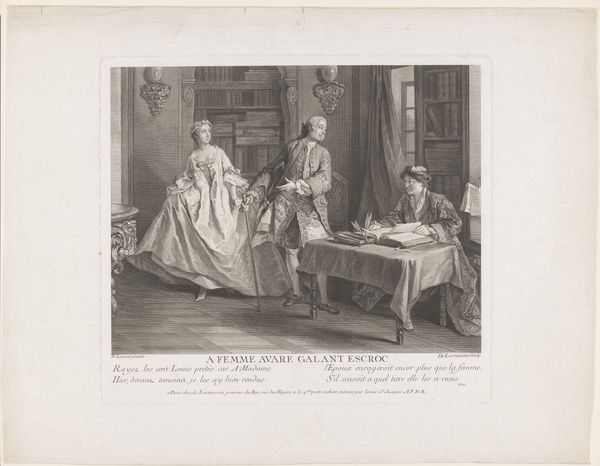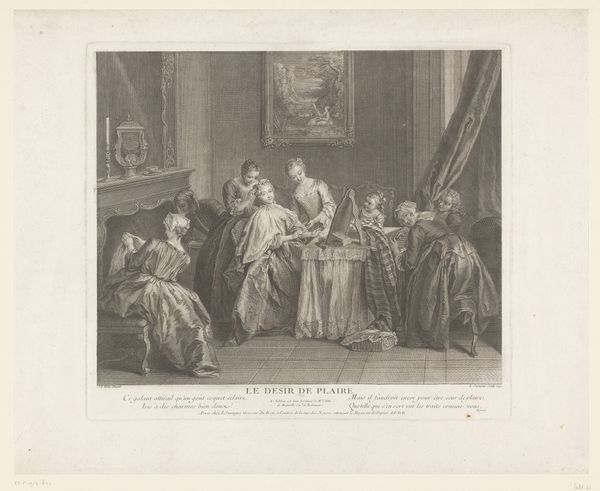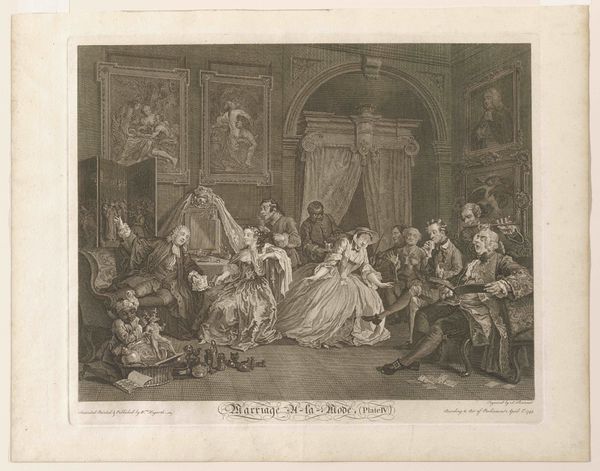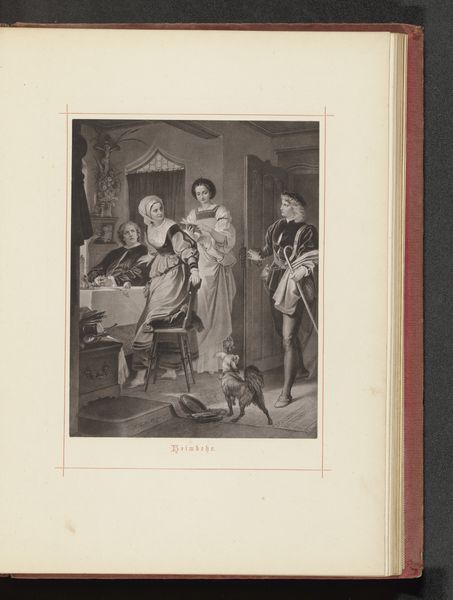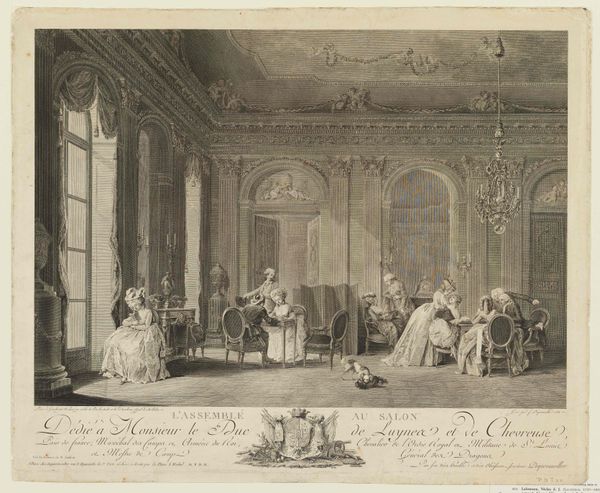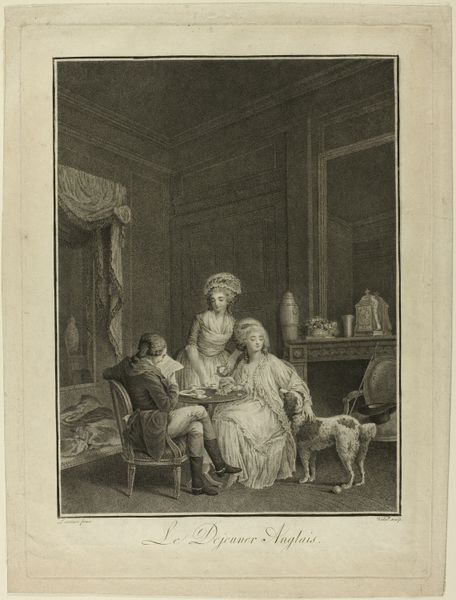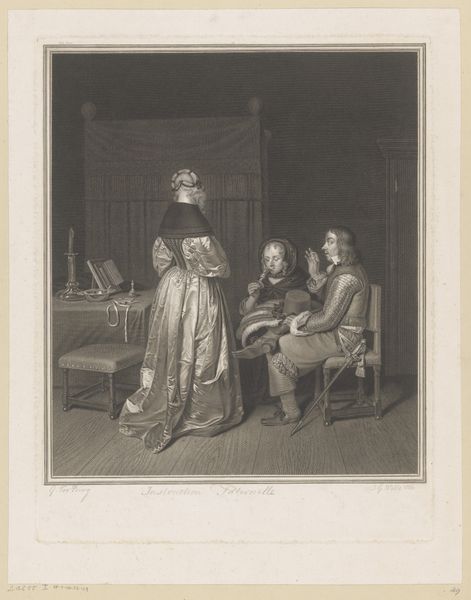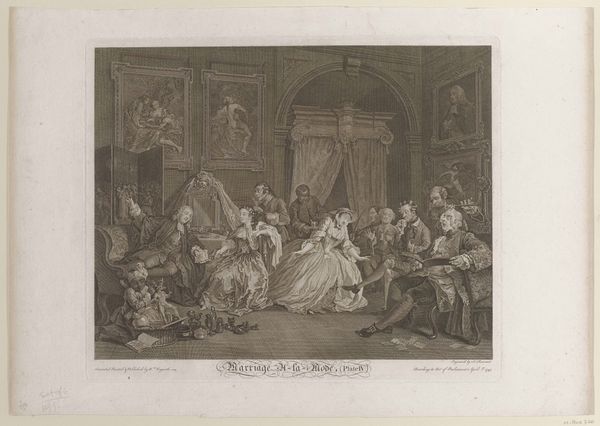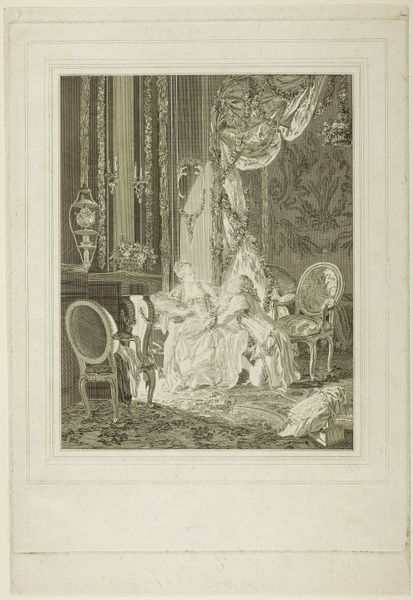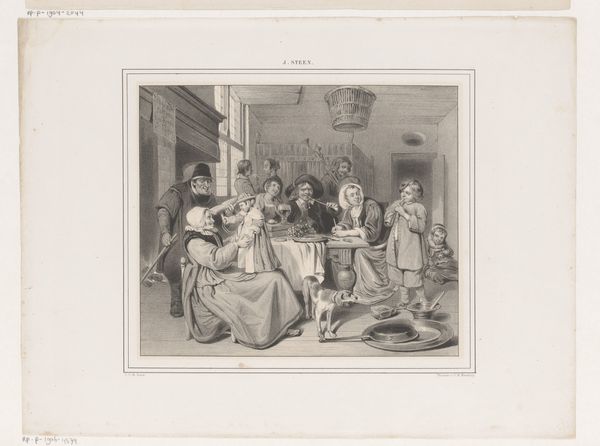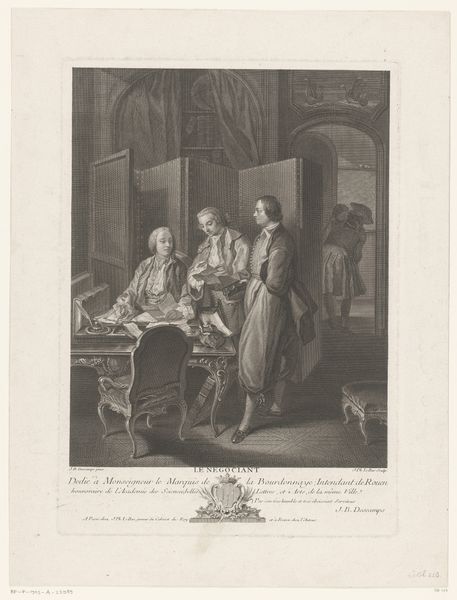
drawing, print, paper, engraving
#
drawing
#
baroque
# print
#
paper
#
genre-painting
#
engraving
Dimensions: height 382 mm, width 498 mm
Copyright: Rijks Museum: Open Domain
Curator: Immediately, the image evokes a feeling of serene domesticity, a glimpse into a private world. The light seems soft, almost filtered, focusing on the intimate interaction between the figures. Editor: Here we have "Hollandse Kraamkamer", created in 1757 by Pieter Tanjé. This engaging engraving printed on paper is housed here at the Rijksmuseum. It provides a look into the genre paintings that dominated the era. Curator: The presence of a family portrait prominently displayed suggests a desire to align this event with familial lineage and perhaps even legacy. Family name mattered then! The mother sits holding her child as the midwife oversees. The baby in her arms looks doll-like, almost an icon. Editor: The details do create a strong sense of order and expectation. This kind of depiction of a Dutch birthing room seems intended for wider audiences, to convey idealized, domestic roles. I mean, even the bed has expensive fabric. Who sleeps on silks and velvets post childbirth?! Curator: It could be viewed as a form of symbolic representation, intended to reflect not just reality but ideals. Note how the arrangement of figures mirrors the spatial layout of the room itself; perhaps it is subtly drawing connections between interior life, social structures, and faith. Editor: Perhaps. But also look at the socio-economic implications: this scene speaks volumes about who has access to care, comfort, and even artistic representation. Working class women probably birthed children in squalid conditions without nice furniture. This image does exclude broader intersectional themes! Curator: Still, within the sphere it represents, I would propose that the image explores profound truths of vulnerability and joy—an exploration of the powerful bond during new motherhood and a celebration of heritage. These were the cornerstones of their world and this scene captures their experience with accuracy. Editor: Fair enough, while considering context and representation, seeing beyond the idealized domesticity and considering historical context is essential. It certainly triggers rich thoughts about the social structure during that era, the roles of women, and childbirth at the time.
Comments
No comments
Be the first to comment and join the conversation on the ultimate creative platform.
